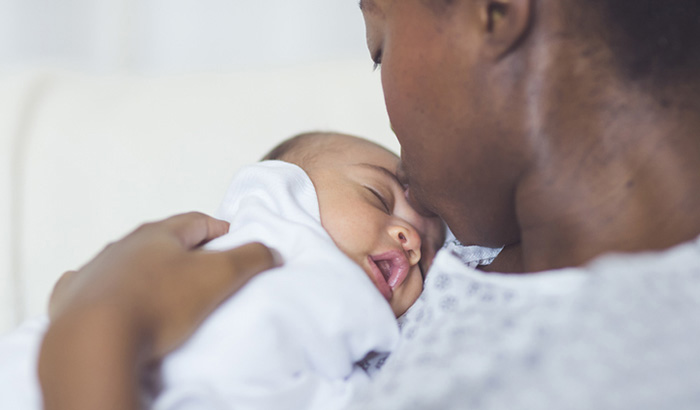Women are the fastest-growing segment of the Veteran population, a group that is expected to expand from 4% in 2000 to 18% in 2040. [1] With women’s increased participation in the U.S. military, demand for women-centered VA healthcare has grown.
In response, VA has developed a range of initiatives to spur inclusion of women in VA research and to address knowledge gaps. The HSR&D-funded Women’s Health Research Network (WHRN), for example, creates a national consortium of VA researchers armed with the knowledge, skills, and resources necessary to successfully conduct women’s health research. WHRN has led to a surge in funding of women Veterans’ research that exceeded $40 million over the last decade. In 2022, HSR&D and WHRN sponsored “Moving Women Veterans’ Health Research Forward,” a Journal of General Internal Medicine supplement that highlights innovations and new findings related to women Veterans’ health and healthcare. In addition, a QUERI program, Enhancing Mental and Physical Health of Women through Engagement and Retention, fosters collaboration among VA Women’s Health Services, the National Center for Health Promotion and Disease Prevention, and other key operations partners to expand access to preventive and mental health services for women Veterans with high-priority health conditions in rural and urban-isolation areas.
VA’s continued investment in the health and well-being of women Veterans will steadily eliminate gender disparities in healthcare delivery and help ensure that care is effective, comprehensive, and tailored to all patients’ needs.
Following are some recent HSR&D studies related to women’s health:

©iStock/cindygoff
Firearms are the leading means of suicide among female Veterans, and lethal means safety (LMS)—reducing access to potentially lethal means when suicide risk is elevated—is a highly recommended suicide prevention strategy. However, firearm LMS research has primarily focused on male Veterans, despite gender differences in firearm access, ownership, and use. Additionally, many suicide prevention initiatives have historically taken a gender-neutral, rather than a gender-sensitive, approach, which might hinder efforts to provide the most effective LMS strategies to women Veterans.
About This Study
Considering the high rates of trauma exposure among women Veterans, a trauma-informed lens is an essential component of a gender-sensitive approach to suicide prevention for this population. This study focused on understanding the needs, preferences, and experiences of women Veterans as they relate to firearm LMS assessment and intervention. Researchers interviewed 40 women Veterans who owned firearm(s) or resided in a household with firearm(s) and had experienced suicidal ideation or attempt. Researchers also interviewed 25 spouses and partners of women Veterans, as well as 32 VA mental health and primary care providers, regarding experiences and preferences for firearm LMS. The interviews aimed to:
Initial and Preliminary Findings
Implications
Study results are being synthesized to develop firearm LMS recommendations tailored for women Veterans, and resources for family members and VA providers.
Principal Investigator
 Lindsey Monteith, PhD, is with the Rocky Mountain Mental Illness Research, Education, and Clinical Center for Suicide Prevention in Aurora, CO.
Lindsey Monteith, PhD, is with the Rocky Mountain Mental Illness Research, Education, and Clinical Center for Suicide Prevention in Aurora, CO.
Related research by this investigator
Recent publications of Dr. Monteith’s work with colleagues include:
Monteith L, Kinney A, Holliday R, et al. Associations between deployment experiences, safety-related beliefs, and firearm ownership among women Veterans. Journal of Psychiatric Research. January 1, 2023;157:72–81.
Spark T, Cogan C, Monteith L, Simonetti J. Firearm lethal means counseling among women: Clinical and research considerations and a call to action. Current Treatment Options in Psychiatry. June 30, 2022;9(3):301–311.
Monteith L, Holliday R, Dichter M, Hoffmire C. Preventing suicide among women Veterans: Gender-sensitive, trauma-informed conceptualization. Current Treatment Options in Psychiatry. June 15, 2022;9:186–201.

©iStock/FatCamera
Research has shown substantial racial and ethnic disparities in cesarean section rates among Veterans of color who use VA maternity care benefits, particularly in VA facilities located in the South. While disparate birth outcomes likely result from a range of factors that affect women throughout their lives and especially during the perinatal period, an in-depth examination of the social determinants of health that might contribute to these disparities has yet to be conducted among Veterans.
About This Study
With a focus on social determinants’ effects on prenatal, labor and delivery, and postpartum care among Veterans of color, this ongoing study (May 2022–October 2023) will examine the social and clinical factors that lead to cesarean deliveries and test the feasibility of doula services to enhance VA maternity care coordination and mitigate disparities in childbirth outcomes. The study has contracted with doula agencies in Louisiana and North Carolina to provide doula services for pregnant Veterans that span the perinatal period. To better understand the effects that social determinants of health and continuous perinatal support have on Veterans, researchers will:
To date, 12 African-American Veterans have been enrolled in the doula study (six in Louisiana and six in North Carolina). Women in the study range in age from 24–41, 36% are pregnant for the first time, and 27% have had a previous C-section delivery. So far, three women have successfully delivered their infants using doula care.
Expected Implications
Findings are expected to:
Principal Investigator
 Kristin Mattocks, PhD, MPH, is associate chief of staff for research and education for the VA Central Western Massachusetts Healthcare System in Leeds, MA.
Kristin Mattocks, PhD, MPH, is associate chief of staff for research and education for the VA Central Western Massachusetts Healthcare System in Leeds, MA.
Related research by this investigator
Recent publications of Dr. Mattocks’s work with colleagues include:
Sheahan K, Kroll-Desrosiers A, Mattocks K, et al. Sufficiency of health information during pregnancy: What's missing and for whom? A cross-sectional analysis among Veterans. Journal of Women’s Health. November 9, 2022;31(11):1557–1566.
Friedman S, Shaw J, Mattocks K, et al. Gynecologist supply deserts across the VA and in the community. Journal of General Internal Medicine. August 30, 2022;37(Suppl 3):690–697.
Lumsden R, Goldstein K, Mattocks K, et al. Racial differences in nontraditional risk factors associated with cardiovascular conditions in pregnancy among U.S. women Veterans. Journal of Women’s Health. May 16, 2022;31(5):706–714.

©iStock/andresr
Cardiovascular disease (CVD) is a leading cause of disability, hospitalization, and premature death among women in the U.S. CVD risk factors are common among women Veterans and are increasingly seen in women at younger ages. With the number of women Veterans growing more rapidly than men, CVD management for women Veterans is increasingly important. However, data from non-Veteran populations has shown that many patients do not receive guideline-directed medications, and women are often less likely to receive these therapies compared to men.
About This Study
Clinical practice guidelines recommend multiple medications that can reduce risk of mortality and adverse cardiovascular outcomes. Given the increasing burden of cardiovascular disease, including coronary artery disease (CAD) and heart failure (HF), among women Veterans, researchers set out to determine if there are disparities in the use of guideline-directed medical therapy by gender among Veterans with incident CAD and HF. Participants in this study were Veterans (934,504; 88% men and 129,469; 12% women) returning from Operations Enduring Freedom, Iraqi Freedom, and New Dawn.
Researchers examined differences by gender in the prescription of guideline-directed medical therapy at 30 and 90 days, and 12 months after diagnosis of incident CAD and HF. For CAD, medications included statins and antiplatelet therapy. For HF, medications included beta-blockers and renin-angiotensin-aldosterone system inhibitors.
Findings
Implications
Despite guideline recommendations, young women Veterans have approximately half the odds of being prescribed guideline-directed medical therapy within one year after a diagnosis of HF. These results reveal concerning care gaps and highlight the need to develop targeted strategies to minimize gender disparities in CVD care to prevent adverse outcomes in this young and growing population.
Principal Investigator
 Sanket Dhruva, MD, MHS, is an HSR&D Career Development Awardee with the San Francisco VA Health Care System.
Sanket Dhruva, MD, MHS, is an HSR&D Career Development Awardee with the San Francisco VA Health Care System.

©iStock/PeopleImages
Access to perinatal mental healthcare is important, as depression is the most common complication of pregnancy, and depression symptoms are more prevalent among pregnant Veterans than among civilians. The United States Preventive Services Task Force (USPSTF) recommends that “clinicians provide or refer pregnant and postpartum women who are at increased risk of perinatal depression to counseling interventions.” However, few studies have focused specifically on the mental health needs of Veterans during the perinatal period, and no studies have specifically identified whether pregnant and postpartum Veterans are interested in greater availability of perinatal mental healthcare.
About This Study
This study explored Veterans’ perspectives on implementing USPSTF recommendations that would refer them to a VA mental health counselor at the time of pregnancy confirmation, reflecting on their recent and ongoing experiences of mental healthcare and depression screening during the perinatal period.
Researchers conducted semi-structured interviews with pregnant and postpartum Veterans (n=27) who had delivered infants or were due by February 2020, and integrated quantitative survey data to explore pregnant and postpartum Veteran perspectives of USPSTF recommendations that aim to expand mental health counseling for the prevention and treatment of perinatal depression.
Findings
Implications
Findings support the implementation of more comprehensive perinatal depression prevention policies and practices within VA care. Understanding the real-world feasibility and prevailing barriers to comprehensive perinatal depression care is needed to inform implementation of the USPSTF recommendations or a similar intervention tailored for VA care.
Principal Investigator
 Aimee Kroll-Desrosiers, PhD, MS, is a research health scientist with the VA Central Western Massachusetts Healthcare System.
Aimee Kroll-Desrosiers, PhD, MS, is a research health scientist with the VA Central Western Massachusetts Healthcare System.
Related research by this investigator
Recent publications of Dr. Kroll-Desrosiers’s work with colleagues include:
Mattocks K, Kroll-Desrosiers A, Marteeny V, et al. Veterans' perinatal care and mental health experiences during the COVID-19 pandemic: An examination of the role of prior trauma and pandemic-related stressors. Journal of Women’s Health. October 2022;31(10):1507–1517.
[1] Facts and Statistics - Women Veterans Health Care (va.gov)